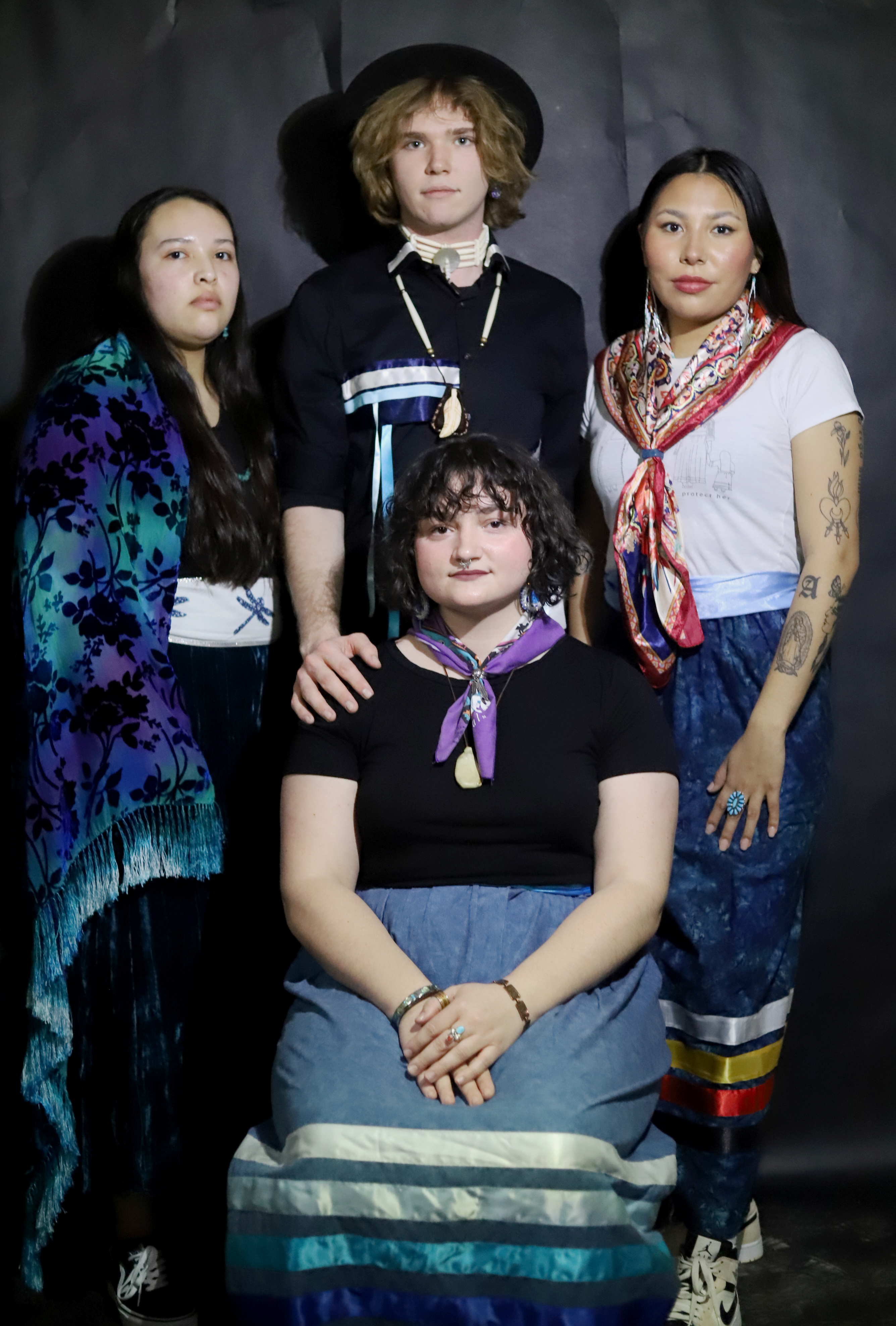On Sunday, Nov. 9, 2021, members of the Native American and Indigenous Student Alliance (NAISA) made a painful discovery. The Rock, which they had painted only two days prior to celebrate Native American Heritage Month, had been defaced with hateful and racist messages. Vandals attempted to paint over the original design, which included red handprints to represent the plight of missing and murdered Indigenous women in North America, land acknowledgements for the Anishinaabe tribes and a Jingle Dress Dancer to signify healing. “Ojibwe? No way!!” was spray-painted on the Rock's ledge.
At Northwestern, Native American and Indigenous students make up less than 1% of the undergraduate student body. They find community at an institution with ties to colonialism and anti-Indigenous violence. According to the school's Land Acknowledgement, the Evanston campus is located on the traditional homelands of the Council of Three Fires: the Ojibwe, Potawatomi and Odawa Nations, as well as the land of the Menominee, Miami and Ho-Chunk Nations. Northwestern was founded by John Evans, who served as the superintendent of Indian Affairs and territorial governor of Colorado. On Nov. 29, 1864, during Evans' tenure, U.S. soldiers killed 209 Cheyenne and Arapaho people in the Sand Creek Massacre.
In 2013, after repeated efforts from NAISA, Northwestern formed the John Evans Study Committee to review and issue a report on Evans and the nature of his involvement in the massacre. The report concluded that while Evans did not actively plan or support the attack, his actions created a conducive atmosphere for the massacre to unfold. In its wake, he never explicitly expressed remorse or acknowledged the event as a massacre.
During the investigation, the Committee hosted an open forum and concluded that Northwestern had made little-to-no effort to support or engage with Native American and Indigenous communities. Jasmine Gureanu, director of Native American and Indigenous Affairs at the University, said in an email to NBN that this failure could be seen as a continuation of Evans' anti-Indigenous history.
As a result, Northwestern launched the Native American Outreach and Inclusion Task Force, the purpose of which was to “recommend strategies to strengthen Northwestern's relationship with Native American communities through recruitment efforts, academic programs and campus support services.”
The Task Force recommended establishing a research center to support the needs of Indigenous populations, and in 2015, the Mellon Foundation awarded Northwestern $1.5 million to support the Center for Native American and Indigenous Research (CNAIR). Additionally, NAISA, founded in 2012, has since seen a dramatic increase in participation. The organization now has enough members to form a council with various leadership positions.
Despite these steps, which also include the formal Land Acknowledgement and the creation of the Native Studies minor, many members of NAISA feel that Northwestern has failed to support their community. The administration's delayed response to the vandalization of the Rock serves as a painful reminder of its shortcomings.
The following stories are condensed transcriptions of interviews with three Indigenous undergraduate students and leaders in NAISA, with the aim of creating a platform for them to share their experiences as Indigenous people and Northwestern students.
